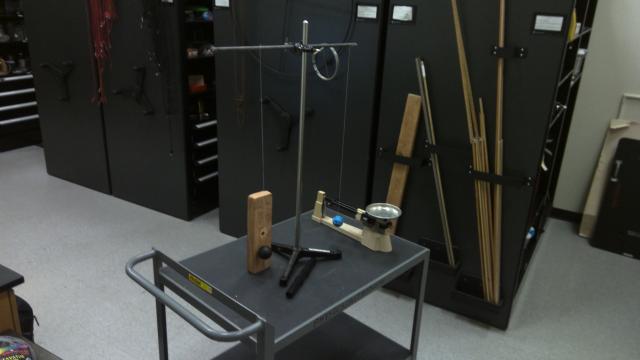Conservation of Momentum - Happy and Sad Balls
- If you want to, you can use the balance to determine the mass of the balls. Ideally, they are the same but in fact the sad ball is about 10% more massive which you would think makes it even more likely to knock the 2x4 over.
- Demonstrate that the happy ball bounces on the table and the sad ball does not
- Set up the balls on the pendulum from the same rod at the same height (XX cm above table) with the same length (enough spacing so they don't interfere)
- Place the 2x4 on its short end next to the happy ball. Use the rod to move the ball a fixed distance from the 2x4. Hold the ball in place, remove the rod, and release the ball from rest. It should knock the 2x4 over.
- Repeat with the sad ball. If done at the correct height, it will not knock the 2x4 over.
NOTES: This demo is all about demonstrating the difference between momentum and energy. Students may notice that the sad ball seems to lose more energy during a collision than the bouncy ball, so they will likely expect that the sad ball will transfer more energy to the 2x4 and knock it over. The key to understanding is that mechanical energy is not conserved in the collision, so momentum is the better tool to understand what happens. The bouncy ball has a larger change in momentum because it goes from +v to -v, while the sad ball just goes from +v to 0. Thus, the happy ball transfers more momentum to the 2x4, even though it loses less kinetic energy.

